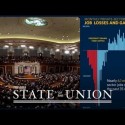 I am constantly amazed at how the world of litigation has changed so much in such a short period of time since I started practicing almost 20 years ago. OK, I accept that some of you don’t think 20 years is a short period of time, but it sure seems like it to me. As I have mentioned in this blog before, the ability to make powerful, high-quality trial graphics was extremely limited by the software available in the early 1990s. I was reminded of how far we’ve come in the area of visualization and modeling when I recently had dinner with Mike McTeer, who made a similar career shift as I did, but in a different field. Mike has a background in construction, and a few years ago, he decided to start a firm that specializes in 3D visualizations of construction.
I am constantly amazed at how the world of litigation has changed so much in such a short period of time since I started practicing almost 20 years ago. OK, I accept that some of you don’t think 20 years is a short period of time, but it sure seems like it to me. As I have mentioned in this blog before, the ability to make powerful, high-quality trial graphics was extremely limited by the software available in the early 1990s. I was reminded of how far we’ve come in the area of visualization and modeling when I recently had dinner with Mike McTeer, who made a similar career shift as I did, but in a different field. Mike has a background in construction, and a few years ago, he decided to start a firm that specializes in 3D visualizations of construction.
His firm specializes in “Construction Visualization Integration and Building Information Modeling,” which basically means he visualizes and creates models of projects so builders more fully understand the process of the project, discover better ways to build it, and identify problems before they occur. When I saw his work, I was struck by what a great tool this is for the construction industry. This type of computer modeling was impossible only a few years ago, and Mike says that a number of larger clients now require it for any job before the work starts.
You might ask, what does this have to do with litigation? Well, just like Mike’s clients who never used this process before then realized they cannot do a project without it, attorneys who discover how a case can be visualized and strengthened with graphics at an early stage begin to view litigation graphics as a de facto requirement for case preparation and presentation. [Read more...]
 Last week, Ken Broda-Bahm wrote a great piece about the recent State of the Union Address (“
Last week, Ken Broda-Bahm wrote a great piece about the recent State of the Union Address (“


 One of the most common items attorneys will put into a brief or a case presentation is an overhead map of the relevant area. Since the dawn of Google, attorneys have grown accustomed to copying and pasting the image of a Google map into a document or a PowerPoint presentation. I, too, am a big fan of using Google Maps, Google Earth, and all the street views and archival images available through them (see
One of the most common items attorneys will put into a brief or a case presentation is an overhead map of the relevant area. Since the dawn of Google, attorneys have grown accustomed to copying and pasting the image of a Google map into a document or a PowerPoint presentation. I, too, am a big fan of using Google Maps, Google Earth, and all the street views and archival images available through them (see 
 I recently had the opportunity to do something quite fun. My torts professor from law school asked me to teach a class on “the real practice” of tort law. I got the opportunity to lecture, to show some examples of demonstrative evidence to prove a case, and to call on the unsuspecting students. This all stemmed in part from last year’s New York Times article
I recently had the opportunity to do something quite fun. My torts professor from law school asked me to teach a class on “the real practice” of tort law. I got the opportunity to lecture, to show some examples of demonstrative evidence to prove a case, and to call on the unsuspecting students. This all stemmed in part from last year’s New York Times article  Yesterday was one of those days that reminded me of the value of visiting a site for a construction-related case to see and feel firsthand what is involved. Couldn’t I simply hire a photographer to take pictures of it for me instead? Perhaps, but that’s a poor substitute. It’s much more effective to tour the scene with the lead attorney and experts, as well as with our firm’s in-house architect to tap into his expertise about the building’s design and standard construction practices.
Yesterday was one of those days that reminded me of the value of visiting a site for a construction-related case to see and feel firsthand what is involved. Couldn’t I simply hire a photographer to take pictures of it for me instead? Perhaps, but that’s a poor substitute. It’s much more effective to tour the scene with the lead attorney and experts, as well as with our firm’s in-house architect to tap into his expertise about the building’s design and standard construction practices.



Follow Cogent Legal
Subscribe by Email